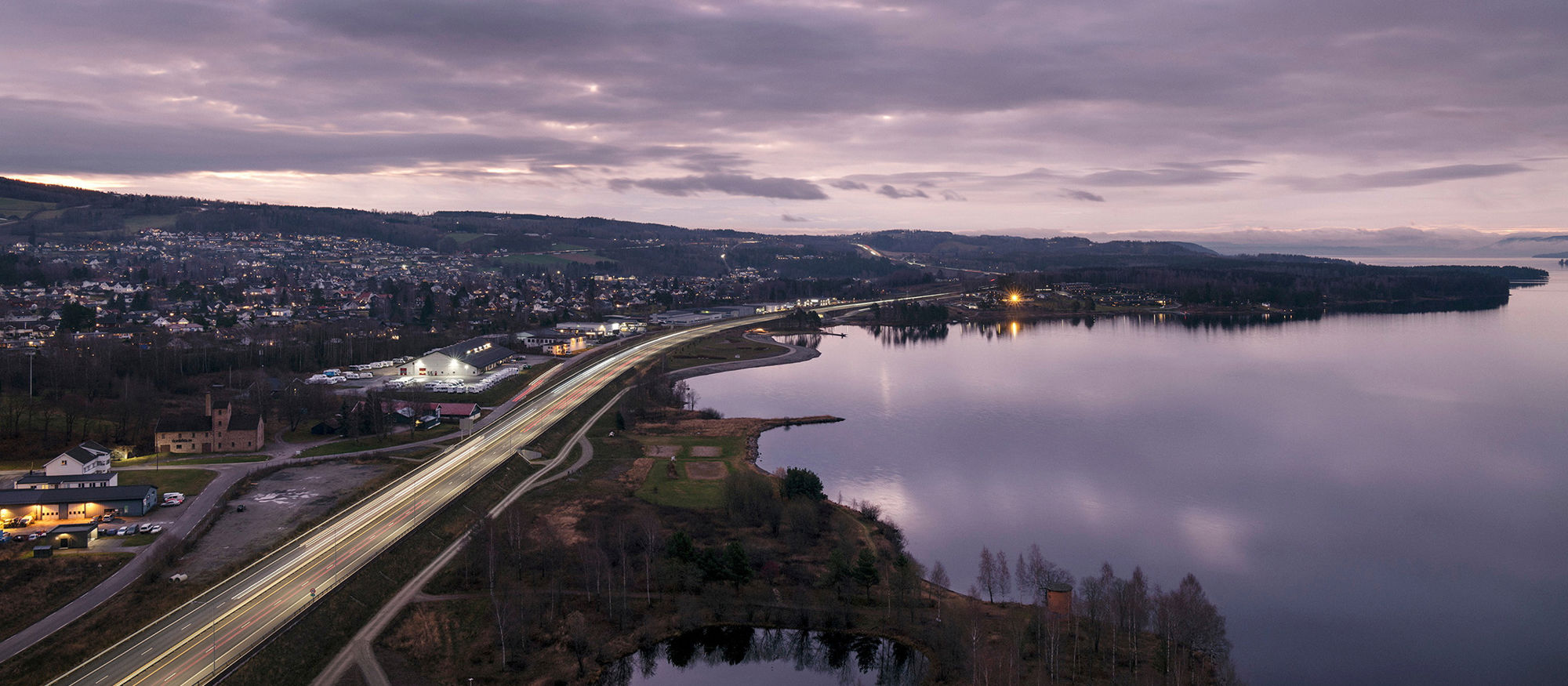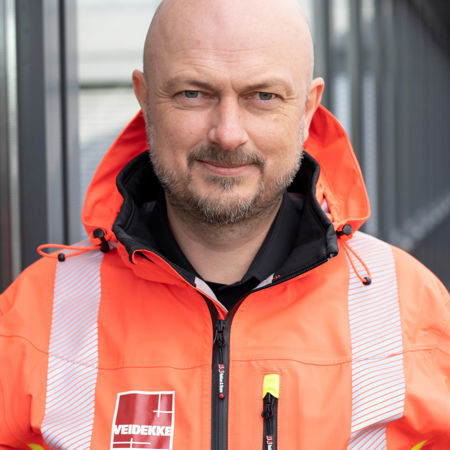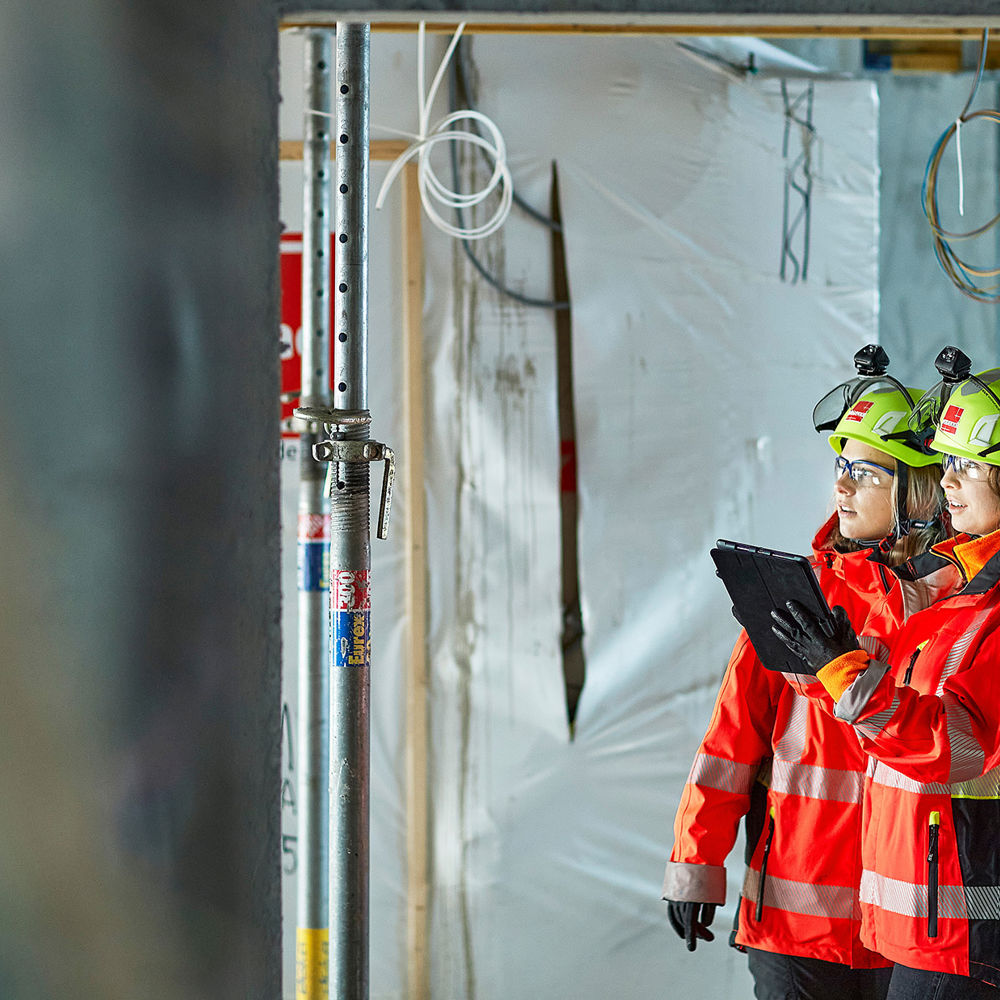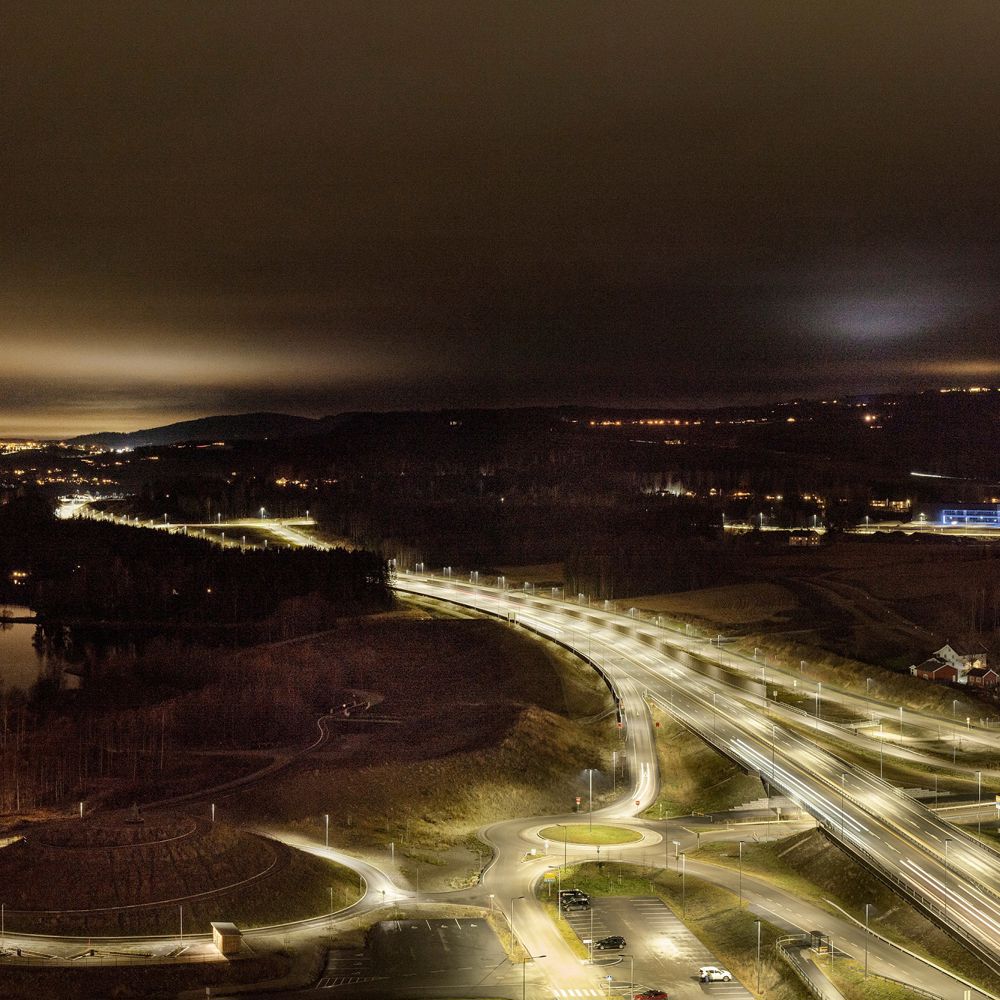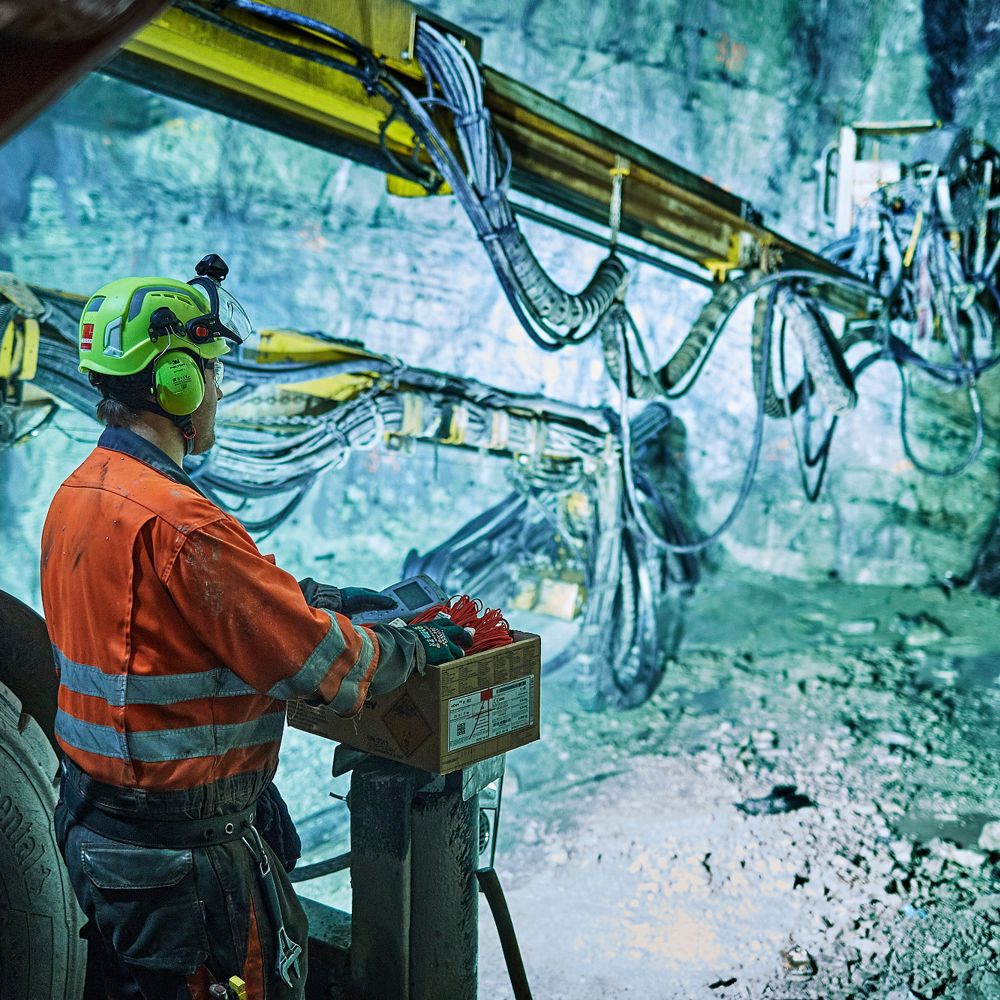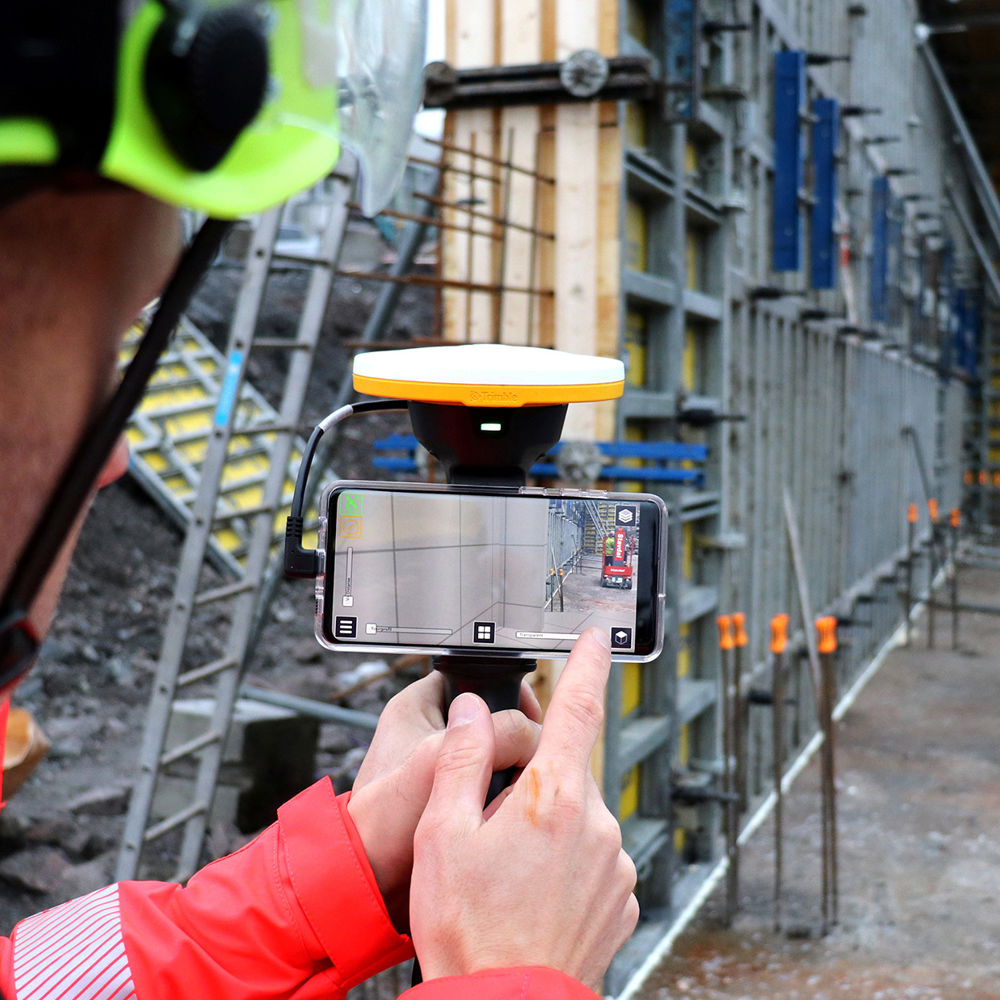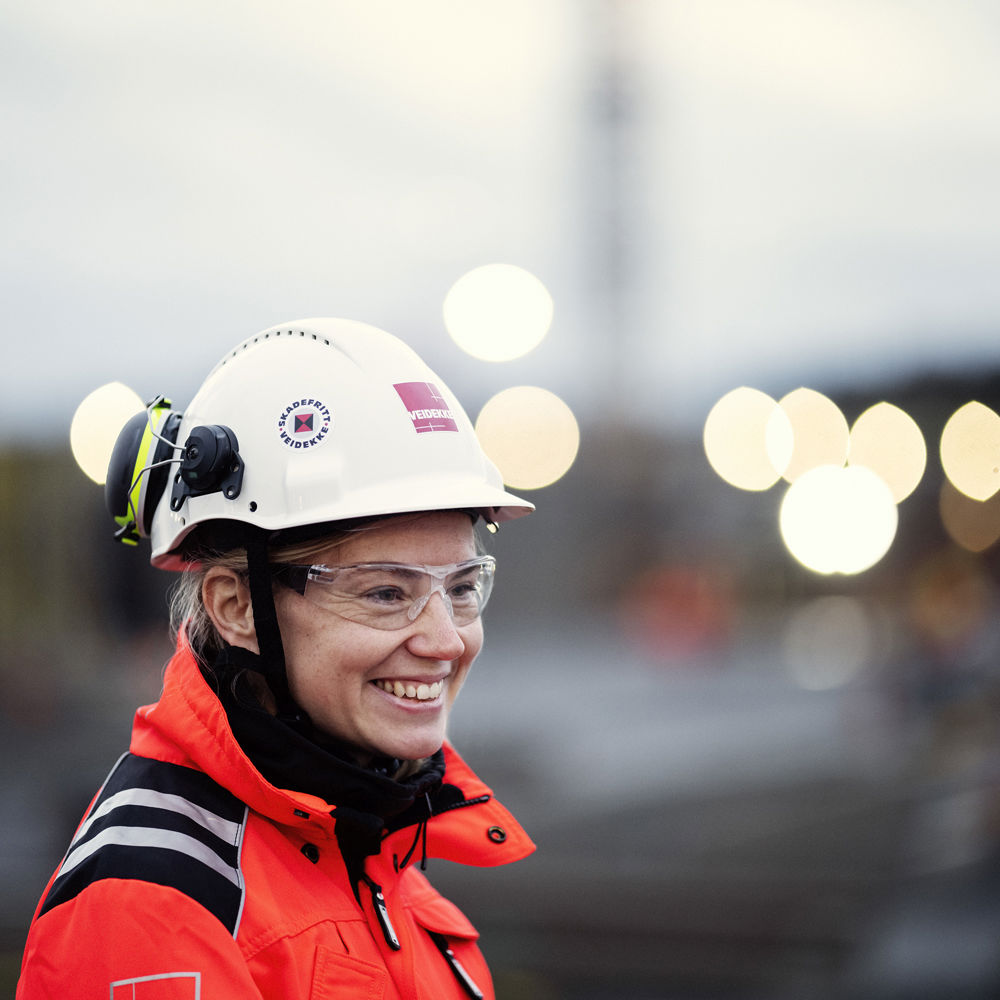About the project
The project is a design and build contract NS 8407 based on BVP (best value procurement) / performance procurement as procurement form. Veidekke's optimisation led to the project being opened to traffic 8 months earlier than the client’s original schedule.
The project consists of:
- 2 km 4-lane European Road dimensioned for 110 km/h
- 5 km GS road
- 9 km county road
- 11 km private/municipal roads
- 1 lay-by
- a new beach
- 39 pcs. structures
- complex water and sewage system
- new tunnel of 2 x 300 metres
The project also included the demolition of 10 bridges as well as culverts and supporting walls. One of the major challenges during the construction period was related to traffic management and consideration to cyclists and pedestrians, as the new E6 is constructed parallel to and intersecting with the existing road. The area has a large volume of traffic, both local and national with a lot of heavy transport. The road alignment is close to urban settlements and therefore had a number of challenges related to dust, noise and tremors, in addition to handling cultivated land.
Works in long tunnels
New drive shaft tunnel, length approx. 300 m. Cross sections range from T14.5 in the south to T10.5 in the north. Conventional driving of tunnel with drilling and blasting, totalling approx. 45,100 m3. Bolt securing and injections were carried out throughout the length of the tunnel, with additional measures in zones with alum shale and occasional poor rock quality. Prefabricated concrete elements are mounted throughout the length of the tunnel, with vaults of PE foam and gunite. In addition, the existing Skarpsno tunnel has been extended to cross section T14.5 in the south and T10.5 in the north. Water and frost protection is also installed in the form of concrete elements and PE foam with gunite throughout the length of the tunnel.
Larger constructions
39 pcs. structures:
- 9 pcs. bridges in the line
- 4 pcs. concrete overpasses
- 3 pcs. glulam overpasses
- 6 pcs. bridges on secondary road
- 12 pcs. culverts
- 4 pcs. tunnel portals
- 1 pc. railway bridge
Local suppliers have been used for both wooden bridges and prefabricated culverts. All concrete structures are carried out with low-heat concrete, which reduces the project's greenhouse gas emissions. This has been an important contributor to reducing greenhouse gas emissions by 41%.
Most notable is the E6 bridge at Tjernli which facilitates the future Intercity railway. This is built using sliding formwork where walls and wings have a total length of 180m, and a maximum height of 12m. Other special constructions are the E6 construction that crosses over the Dovre Line. This was built as a corrugated steel vault on concrete foundations and assembled in a total break of 96 hours.
Material management
Approximately 1,550,000 fm3 of soil and sediments were removed, 285,000 m3 of rock in daylight and 45,100 m3 in tunnel. All material management in the line was carried out in the immediate vicinity of the trafficked E6, with an AADT of about 20,000. In order to achieve good HSE, environmental and production logistics, GPS-based fleet management was used on all trucks and material movement equipment, including machine efficiency monitoring based on sensor data.Stormwater management was established with a climate factor of 200-year flood, with a factor of 1.4. This resulted in a slight increase in the size of pipe dimensions used in this project than in previous projects. On this project, open trenches with a large cross section were chosen, taking into account the infiltration of the volume of water. Much of the existing water and sewage was reconstructed and new established, but also interconnection of the old and new.
In order to have good control over the quality of the works performed, the app from Dalux was used in which all checklists were collected. This was written and followed up by our ADK – pipelayers who were responsible for the trench work. Mainly dimensions of 200-300 mm drainage pipes, 400-500 mm stormwater pipes and 1,000 – 1,200 mm stormwater and sand trap were used. Major changes were made to the existing stormwater system, especially in the villages of Brumunddal and Rudshøgda. It was also important to have a well-planned traffic management in order to carry out the work in a safe and good way.
